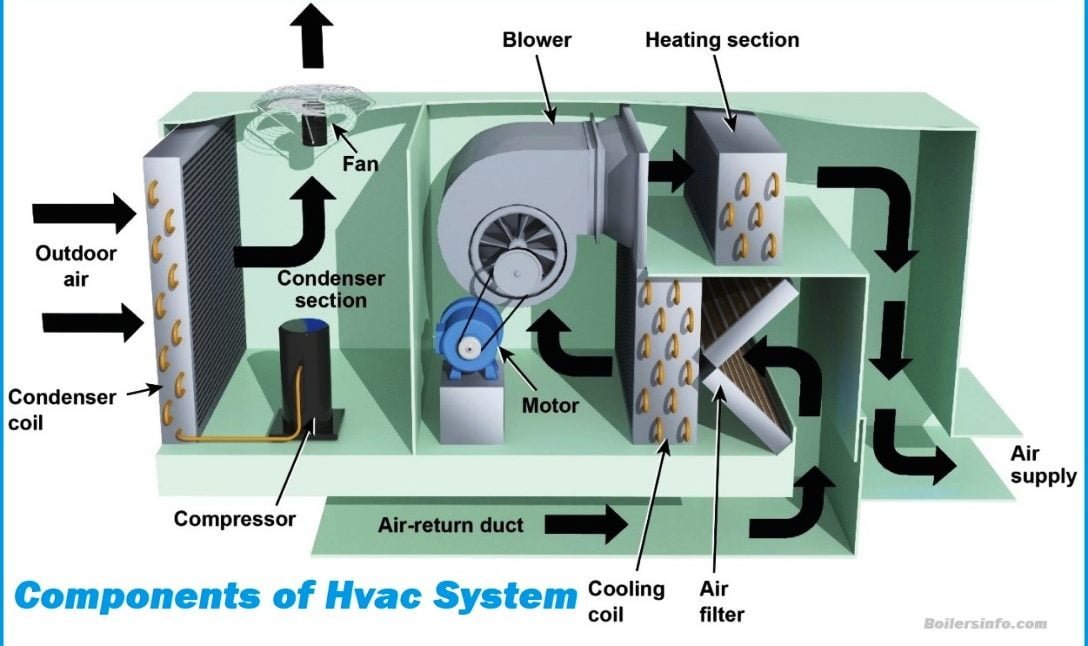
When your air conditioning unit starts acting up, it's easy to feel overwhelmed. But understanding the basic components can empower you to troubleshoot minor issues and communicate effectively with HVAC professionals. Let's break down the key parts for air conditioning units, explaining their functions and importance.
The Compressor: The Heart of Your AC
The compressor is arguably the most vital component. It's responsible for circulating refrigerant, the substance that absorbs heat from your indoor air. Think of it as the heart of your AC system, pumping refrigerant through the coils. A failing compressor often results in warm air blowing from your vents, indicating a serious problem.
The Condenser Coil: Releasing Heat Outdoors
Located in the outdoor unit, the condenser coil works in tandem with the compressor. As the refrigerant is compressed, it heats up. The condenser coil releases this heat into the outside air, allowing the refrigerant to cool down before it returns indoors. Dirty coils can significantly reduce efficiency, so regular cleaning is essential.
The Evaporator Coil: Absorbing Indoor Heat
Inside your home, the evaporator coil absorbs heat from the indoor air. As warm air blows across the coil, the refrigerant inside absorbs the heat, cooling the air before it's circulated back into your rooms. Condensation forms on the evaporator coil, which is why a properly functioning drain line is crucial.
The Expansion Valve or Thermostatic Expansion Valve (TXV): Controlling Refrigerant Flow

The expansion valve or TXV regulates the flow of refrigerant into the evaporator coil. It ensures the correct amount of refrigerant is used, optimizing the cooling process. This part is critical for maintaining the proper temperature and pressure within the system. A faulty TXV can lead to inefficient cooling or even freezing of the evaporator coil.
The Blower Motor: Circulating Air
The blower motor is responsible for circulating air through the system. It pushes warm indoor air across the evaporator coil and distributes the cooled air throughout your home. Without a functioning blower motor, your AC won't effectively cool your space.
The Fan Motor: Cooling the Condenser
The fan motor, located in the outdoor unit, powers the fan that blows air across the condenser coil. This airflow helps dissipate heat from the refrigerant. If the fan motor fails, the condenser coil can overheat, leading to system inefficiencies and potential damage.
The Thermostat: Setting the Temperature

The thermostat is your control center. It allows you to set the desired temperature and controls when the AC unit turns on and off. Modern thermostats often include programmable features for greater energy efficiency.
The Refrigerant Lines: Connecting the Coils
Refrigerant lines connect the indoor evaporator coil to the outdoor condenser coil. These lines carry the refrigerant throughout the system. Leaks in these lines can lead to refrigerant loss, reducing cooling efficiency and potentially causing environmental harm.
The Air Filter: Keeping Air Clean
The air filter is essential for maintaining indoor air quality. It traps dust, pollen, and other particles, preventing them from circulating through your home. Regularly replacing or cleaning your air filter is crucial for both air quality and system efficiency.
The Drain Pan and Drain Line: Removing Condensate

As the evaporator coil cools the air, condensation forms. The drain pan collects this moisture, and the drain line directs it outside. A clogged drain line can lead to water damage and mold growth, so regular maintenance is vital.
Capacitors: Starting and Running Motors
Capacitors are electrical components that provide the initial surge of power needed to start the compressor and fan motors. They also help maintain consistent motor operation. Failing capacitors are a common cause of AC problems.
Contactors: Controlling Electrical Flow
Contactors are electrical switches that control the flow of electricity to the compressor and fan motors. They're activated by the thermostat signal, ensuring the AC unit turns on and off as needed.
Conclusion: Maintaining Your AC for Optimal Performance
Understanding these parts for air conditioning units can help you identify potential issues and communicate effectively with HVAC professionals. Regular maintenance, including cleaning coils, replacing filters, and checking refrigerant levels, is crucial for ensuring optimal performance and longevity. By staying informed and proactive, you can keep your AC running smoothly for years to come.
No comments:
Post a Comment
Note: Only a member of this blog may post a comment.